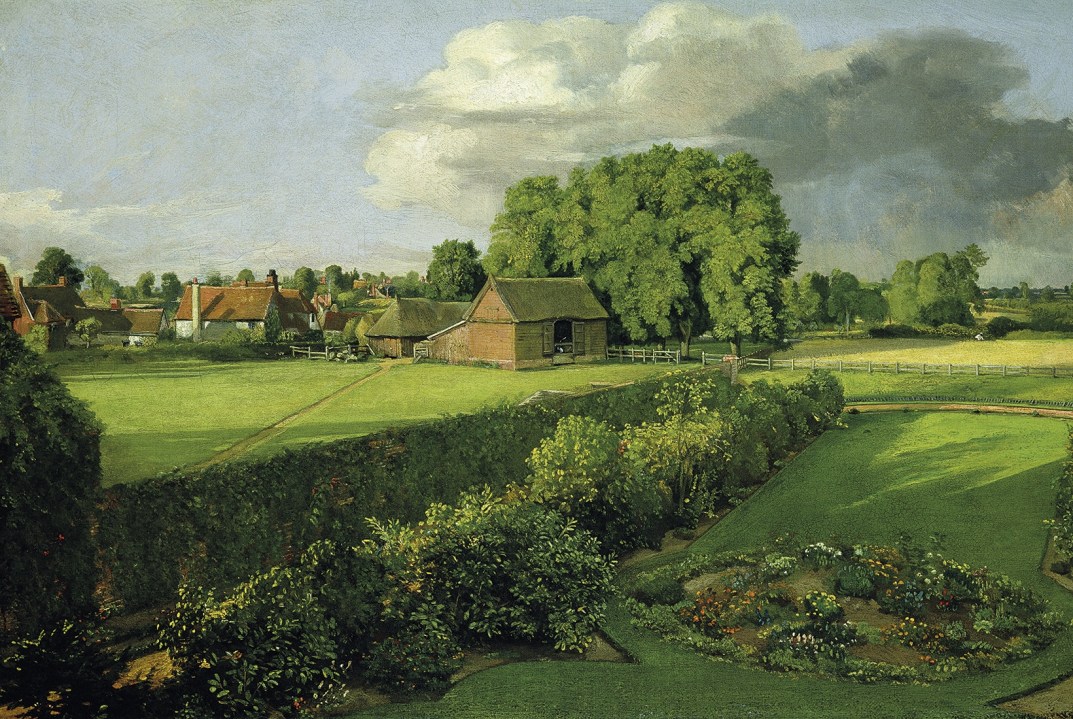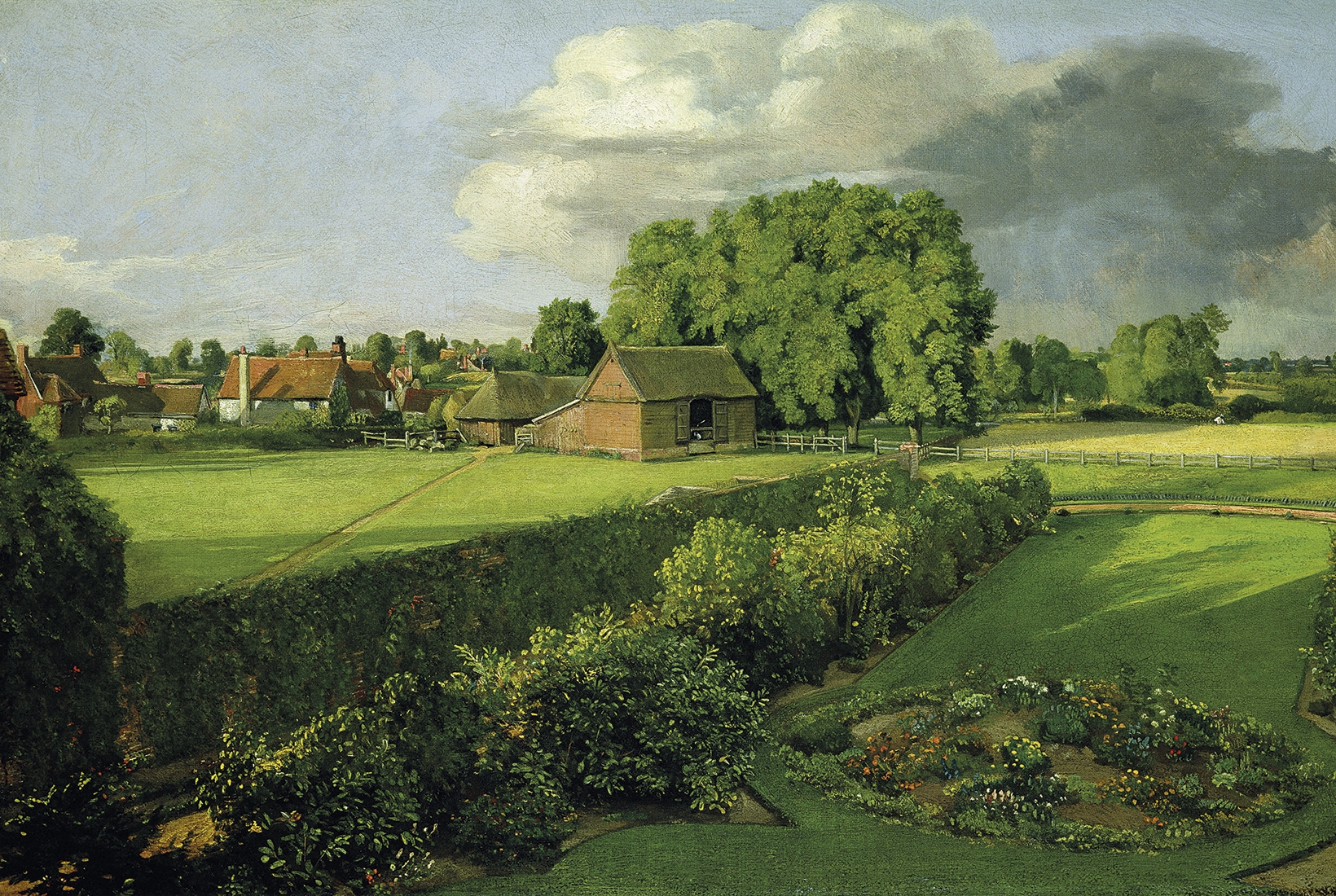Before his marriage John Constable returned regularly in early summer to his native village of East Bergholt. When he wrote from there to his wife-to-be, Maria Bicknell, he almost always exclaimed that Suffolk was ‘in great beauty’. His enthusiasm was never more eloquent than on 22 June 1812, when he declared: ‘Nothing can exceed the beautiful appearance of the country at this time, its freshness, its amenity — the very breeze that passes the window is delightful, it has the voice of Nature.’
I often think about Constable (1776–1837) as I pace across the water meadows on my daily constitutional — partly because this too is an East Anglian landscape not unlike the one he was writing about: flat, leafy, watery, abounding in willows.
Of course, it’s difficult now to see such terrain without thinking of the artist’s name. But Constable also comes to mind because he showed just how much visual pleasure can be extracted from a small area. The country along the Stour near Flatford, a short walk from East Bergholt, is no larger than the zone of riverside Cambridge I stroll around — probably smaller — yet out of this rustic corner he got picture after picture, many of them masterpieces.
That’s often the case with landscape artists. Some, like Constable’s great contemporary, opposite and equal Turner, travel the world in search of new views. But many are what Constable, with 17th-century Dutch masters in mind, called ‘stay-at-home people’. Constable was one himself. He never went abroad. Almost all his greatest works are connected with a few locations where he lived or which were connected with those he loved: Bergholt, Hampstead, Salisbury, Brighton. They were his places.
Many artists are what Constable, with 17th-century Dutch masters in mind, called ‘stay-at-home people’
Among my places are the greens and commons of Cambridge. I’ve walked across them many hundreds of times. Nonetheless Constable helps me to see them, just as he got hints from earlier painters such as Ruysdael. ‘We derive the pleasure of surprise from the works of the best Dutch painters,’ Constable explained, ‘in finding how much interest the art, when in perfection, can give to the most ordinary subjects.’
Many artists are stay-at-home people. Monet got a quarter of a century’s worth of masterpieces out of the reflections on a garden pond. Like Constable, Cézanne stuck largely to the scenes of his boyhood in Provence. He died after being caught by a sudden storm on one last sketching trip to a familiar spot.
Van Gogh was fascinated by Arles but fixated on almost perversely unpicturesque aspects of it. Ignoring the Roman ruins and Romanesque church, he produced world-famous images out of such unpromising spots as the municipal park, the railway bridge, his own nondescript house and the road outside. David Hockney likes to point out that you could have locked Van Gogh in the most boring hotel room in America and he would have come out with a stack of pictures that made it seem enthralling.
Lucian Freud once surprised an interviewer from Channel 4 by announcing that he regarded Constable — a favourite of his — as an ‘erotic painter, in the proper sense’. By that I take it he meant that Constable painted what he loved (which is the correct thing to do, just as writers should stick to what they know about and are fascinated by). It appears he was right. Constable himself confessed to Maria, on 5 June 1814: ‘I love the trees and fields, better than I do the people.’ (Though he made an exception for her.)
Constable had powerful, almost amorous feelings about trees. When at a lecture in 1836 he described the sad end of an ash — in his words, the fate of ‘this young lady’ — he sounded positively bereaved. Constable then showed a drawing he had made ‘when she was in full health and beauty’.
He went on to narrate how, passing by sometime later, he discovered that ‘a wretched board had been nailed to her side, on which was written in large letters: “All vagrants and beggars will be dealt with according to law!”’ The poor ash ‘seemed to have felt the disgrace’ as her branches had already begun to wither. When Constable next saw her, she had been cut down to a mere dead post, just high enough to support the notice. ‘It is scarcely too much to say that she died of a broken heart.’
No doubt some of his audience sympathised with the painter’s feelings, and some not so much. We British have been divided, possibly since pre-Roman times, into tree-lovers and those with arboreal phobias (with quite a few, as always with such binary distinctions, somewhere in the middle).
Many of us seem to regard trees as an irritating source of untidiness — forever liable to dirty cars, cut out light and collapse on walls. The opposite party — Constable among them — would lie down in the road to prevent them being felled or even trimmed. The recent imbroglio in Sheffield demonstrates how heated such disputes can become.
Such strong feelings in a landscape painter should come as no surprise. After all, so much western art has, for centuries, largely consisted of bark, branches and — above all — leaves. There are paintings by Claude, Monet, Cézanne and many others that consist almost exclusively of foliage.
Constable took evident delight in the sensual richness of early summer greenery. You can see that in his work. His paintings are, among other things, lessons in how much visual pleasure can be obtained from everyday things. No object is more familiar than a tree, I can see dozens just by turning my head and looking out of my study window. But a painter might be able to get a compelling picture out of any of them — perhaps a whole series, such as Monet’s poplars, seen from different angles, under changing lights, in various seasons.
Constable left a list of his favourite things in a letter to his friend John Fisher, among them ‘willows, old rotten planks, slimy posts, and brickwork’ and ‘the sound of water escaping from mill dams’. Not all of these are trees, but they are all extremely ordinary (as is the sky, another of his greatest themes).
What they have in common is that they are all connected with the Stour at Flatford, which would itself seem a very mundane spot to almost any other early 19th-century eye. Now, of course, it is maintained by the National Trust, and the whole landscape around carefully preserved. But in Regency England it would have seemed a very workaday place, devoid of the qualities of the sublime and the picturesque — no mountains, no ruins — that were then appreciated by connoisseurs.
On my daily walks I sometimes think that the chestnuts and willows beside the Cam have never seemed richer or more ravishing than they do this year. But perhaps, in this endlessly sunny locked-down spring, I’m simply looking at them harder and longer. Perhaps Constable felt the same when he wrote in July 1815: ‘I think I never saw dear old Bergholt half so beautiful before as now, the weather has been so delightful.’







Comments